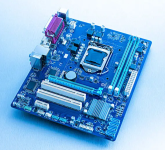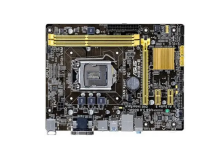(3 of 3)
Once you’ve accessed the BIOS settings, find “Load Fail-Safe Defaults” or something similar and select that. The BIOS might ask if you are sure you want to do this if it is giving you an option. Select either yes or OK. This will reset your BIOS to factory default settings so now your computer should be booting up correctly again. If not, there’s probably an issue with your hardware itself, which would require further troubleshooting especially if it’s stuck in automatic repair.

a) If your computer is having trouble turning on after sleeping, try restarting it and then constantly tapping the power button. Sometimes this can jar something back into place and get you booting up properly again.
b) Turn off hybrid sleep mode in Windows if you’re using a laptop. This puts your computer into a deep sleep state, which can cause problems when trying to turn your computer back on. Also be sure that you aren’t running any software that puts your PC to sleep automatically, such as an energy saving program. And lastly, make sure you don’t have hibernation enabled in BIOS!

c) If none of these work or apply to you, go through all of your device drivers and temporarily disable them one by one. Find the culprits and you’ll almost certainly find that your computer works just fine without them.
d) Resetting your BIOS to its default settings may also help, but only do this as a last resort! Hardware problems related to powering on can often be fixed by resetting the CMOS (Complementary metal-oxide-semiconductor), which is usually done with a jumper pin or button on the motherboard itself. If this doesn’t work, it’s probably time to look into getting your motherboard fixed or replaced.
e) If everything else fails, however, you will probably need to replace your motherboard (or at least its power management system). Replacing/repairing motherboards is expensive time consuming though.
Most of the time, it’s best to take your motherboard to an expert for repairs. Try to only troubleshoot the problem yourself as a last resort. However, you can usually fix simple problems like power issues on your own with little difficulty.
12) My computer doesn’t read any audio/video files
If you are sure that all cables are firmly connected to both devices and that there is no debris preventing proper connections, then you should re-seat (plug and unplug several times) any audio/video cables, including network cables if applicable. You need to make sure your audio device is set as the default device. This can usually be done by right-clicking the sound icon on your system tray and selecting “playback devices”. From there, check that your default device is not muted or set to an alternative audio source. If this is still not working after all of these steps, then most likely you need to re-install the application (sound/video codecs).13) My computer won’t boot past the BIOS screen
If none of these steps have fixed your problem, consider resetting the BIOS. To do this, power off your computer. Now turn it back on but as soon as you see something appear on the screen (maybe even before you see anything), start hitting F2 or delete repeatedly until you are prompted to either go into setup or exit.Once you’ve accessed the BIOS settings, find “Load Fail-Safe Defaults” or something similar and select that. The BIOS might ask if you are sure you want to do this if it is giving you an option. Select either yes or OK. This will reset your BIOS to factory default settings so now your computer should be booting up correctly again. If not, there’s probably an issue with your hardware itself, which would require further troubleshooting especially if it’s stuck in automatic repair.

14) My computer has trouble waking from sleep mode/turning on after sleeping
This is a common problem for laptops but can also affect desktop computers as well. There are multiple ways of trying to fix this depending on what exactly the problem is, but here are some tips:a) If your computer is having trouble turning on after sleeping, try restarting it and then constantly tapping the power button. Sometimes this can jar something back into place and get you booting up properly again.
b) Turn off hybrid sleep mode in Windows if you’re using a laptop. This puts your computer into a deep sleep state, which can cause problems when trying to turn your computer back on. Also be sure that you aren’t running any software that puts your PC to sleep automatically, such as an energy saving program. And lastly, make sure you don’t have hibernation enabled in BIOS!

c) If none of these work or apply to you, go through all of your device drivers and temporarily disable them one by one. Find the culprits and you’ll almost certainly find that your computer works just fine without them.
d) Resetting your BIOS to its default settings may also help, but only do this as a last resort! Hardware problems related to powering on can often be fixed by resetting the CMOS (Complementary metal-oxide-semiconductor), which is usually done with a jumper pin or button on the motherboard itself. If this doesn’t work, it’s probably time to look into getting your motherboard fixed or replaced.
e) If everything else fails, however, you will probably need to replace your motherboard (or at least its power management system). Replacing/repairing motherboards is expensive time consuming though.
Most of the time, it’s best to take your motherboard to an expert for repairs. Try to only troubleshoot the problem yourself as a last resort. However, you can usually fix simple problems like power issues on your own with little difficulty.
